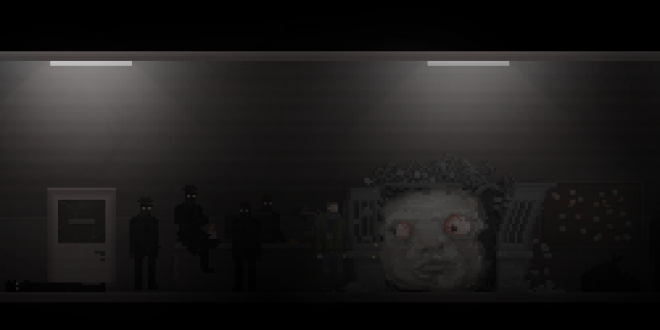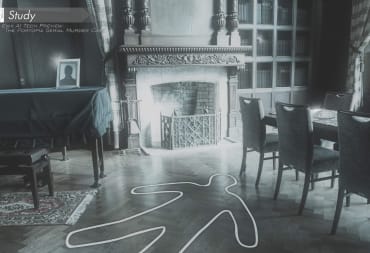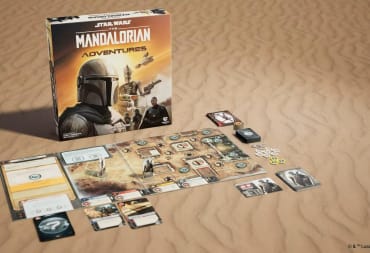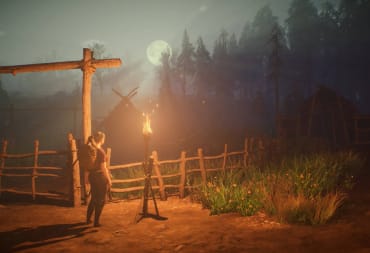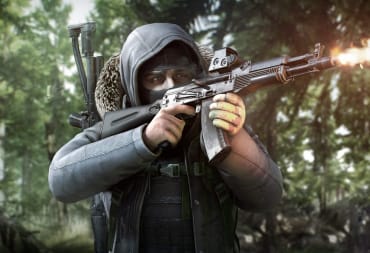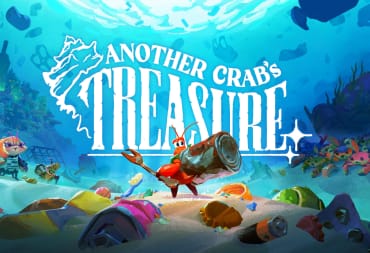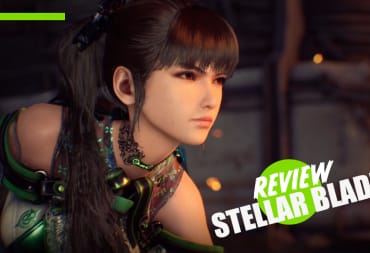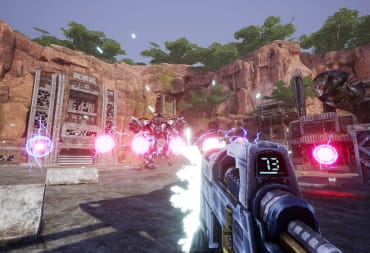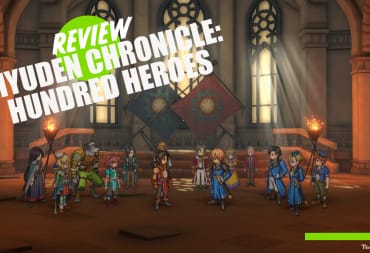Abandoned buildings. Although often derelict and spooky (See Dark Fall: Lost Souls) or overrun with creeps and vagrants (See Outlast), there is something particularly uncanny about an abandoned building that is still spotless. As if everyone who inhabited it just left and never returned. As if, perhaps, something led them to run away in a hurry, fearing for their lives.
In Cowardly Creations' survival-horror, Uncanny Valley, the player is placed in the shoes of Tom, the newly recruited overnight security guard at a recently closed remote facility. The facility has been shut down for secretive reasons. While there is seemingly nothing to guard, the higher-ups have hired a two man security team to keep watch on the place.
Your partner, a gargantuan man named Buck, keeps the place in order during the day, during which time he sits in the security room being a slob. Tom, meanwhile, is a bit more curious. He explores the facility, collects information scattered around, and uses audio files and emails to piece together the story of what happened to this place. Soon you begin exploring the underground levels of the facility, where what was once just an unsettling but otherwise innocuous empty building transforms into a full-fledged nightmare.
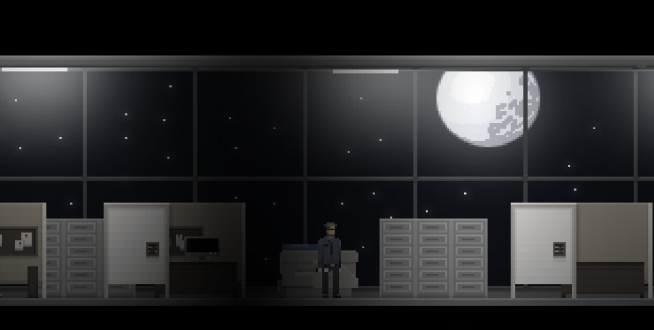
Uncanny Valley succeeds in atmosphere. The facility produces an inexplicable sense of eeriness and dread. As its title suggests, Uncanny Valley takes advantage of the feeling of things being just slightly wrong. The real horror doesn't reveal itself for a long time, which produces a fantastic slow burning effect as the sheer wrongness of this location begins to reveal itself.
This recent wave of low res 2D horror games over the last few years has been particularly impressive. The developers of these games manage to create terrifying environments using only a collection of bulky colored pixels, usually no more than 320x200, and Uncanny Valley is no different. Tom moves a little oddly while running, and Buck is perhaps unreasonably portly, yet the animations and character sprites are at least consistent and generally very smooth.
The backgrounds for their part are rather drab in the facility proper, mostly repetitive gray walls and generic office building décor, yet it works for what it tries to achieve, being just so slightly wrong while looking positively normal on the surface. And the facility below is delightfully creepy, the subtle strangeness of the above ground locales blooming into full-out grotesqueness.
The soundtrack adds greatly to the general unease of the environment as well. It matches the style of Akira Yamaoka or the save room themes from the Resident Evil games, in that it manages a relaxed vibe with an undertone of caution and impending danger. The musical cues when being attacked by enemies are on point as well, shocking even when you are expecting it.
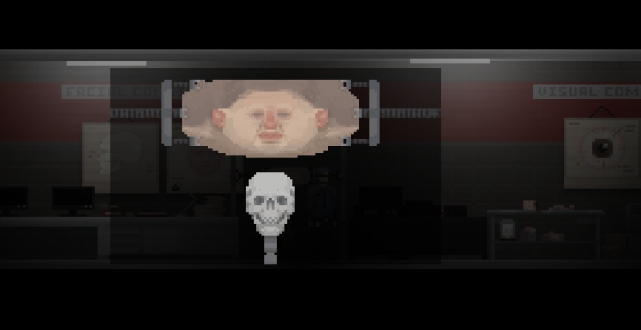
(Mild gameplay spoilers to follow)
Gameplay in Uncanny Valley is essentially split into two parts. Altogether a playthrough should take you less than a couple hours – unless you run into one of the game's many bugs. Thankfully the developers have since removed a great deal of these and will likely continue to remove them over the next few weeks.
The first part involves exploring the above-ground portion of the facility, and the second part involves exploring the below-ground portion. As previously mentioned, the above-ground section is more routine, an introduction to the facility that constantly forebodes of what to come. The below-ground section is a set of puzzles and dangerous encounters in which the player must unlock the elevator to get to the next deepest floor while avoiding enemies. Exploring can be interesting, if a bit repetitive. Those with a strong dislike of epistolary storytelling will want to skip this one. But the narrative is at least unique, and the exploration-focused gameplay adds to its uniqueness.
Two serious points of criticism here: First, Uncanny Valley suffers from the occasional lack of guidance. This is because it has a tendency to shift its gameplay without warning. For instance, the initial portion of the game sets the player into a rhythm of passing each night – designated by a timer that lasts 7 minutes – and going to bed to initiate a dream sequence. Yet the fourth night changes this. The timer is gone, stating instead that your shift is over. When arriving at the security station, Buck will simply look at you and then leave. I thought that this was a bug on my first playthrough.
But Uncanny Valley's actual intention at this juncture is to pressure you to find the keys to the underground section of the facility. But this sudden infinite night breaks the consistency of the gameplay just established, and the means by which to actually get those keys isn't immediately obvious. Once one does find these keys, they can enjoy the game properly again, but it is a jarring hurdle that could have been handled better.
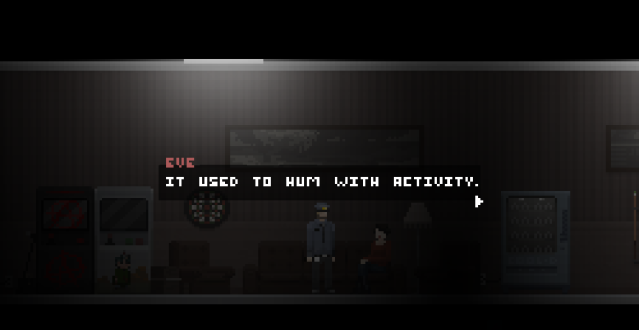
Second, the consequence system. This is the most advertised aspect of the gameplay. Basically it means that in lieu of a traditional game over, if the player is hurt, Uncanny Valley will still continue but with penalties. If you fail to avoid an attack, then you will suffer a wound on whichever part of your body that was hit. If it is your leg, then you'll move more slowly. If you are hurt badly enough, then you will continue the game but down a more negative ending path. Now the intention behind this system is sound. To quote the developers:
“Why? Because dying and repeating the same section over and over is tedious and leads to frustration. The game stops being scary if you're angry and just want to rush through it, so we think that adding such a system will still keep the tension while adding a new layer to scariness.”
This is all well and good, yet getting hit and having to drag your leg still feels like a failure worth restarting the game for. The consequence system feels like a means to elongate the game over sequence rather than replace it. You are still prevented from advancing in the game as originally intended, still cut off from the better endings, which consequently still feels like a player failure. The actual implementation of the consequence system, in short, feels like a different way of reaching the same outcome. It is a drawn out game over, but it's still a game over.
(End gameplay spoilers)
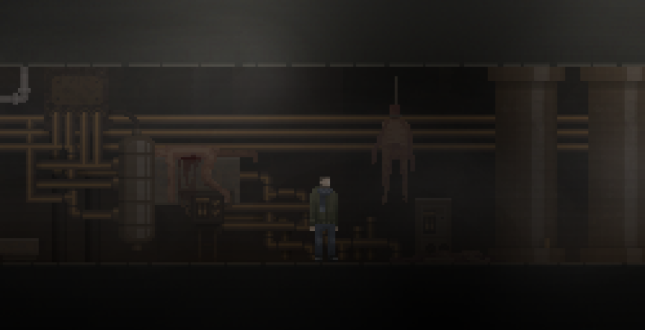
This said, there is still a lot to admire about Uncanny Valley. It does reconsider a lot of survival-horror tropes and do new things. Although the consequence system is questionable at best, the philosophy behind it makes sense. It is at the least a step in the right direction, an idea worth pursuing more in the future. The graphics and sound are fantastic, definitely one of the creepiest indie games I've played this year.
I only wish that Uncanny Valley felt more polished. A lack of guidance should feel like a conscious design choice, yet here it just feels unintentional. These bits of confusion prove to be major hurdles in actually progressing in the game. It's a shame because once you actually get over them, there's a solid game underneath.
Review Summary
Technical hiccups and unclear directives keep Uncanny Valley from being excellent, but this 2D pixel survival horror title has enough eerie vibes and disturbing concepts to keep the player engaged.
(Review Policy)Have a tip, or want to point out something we missed? Leave a Comment or e-mail us at tips@techraptor.net
